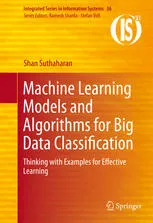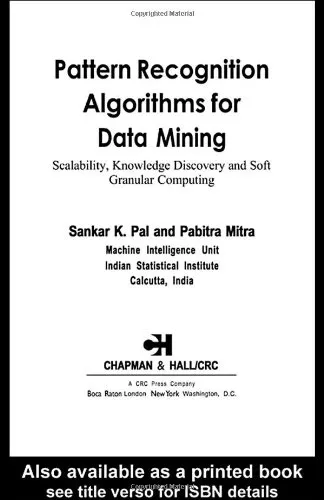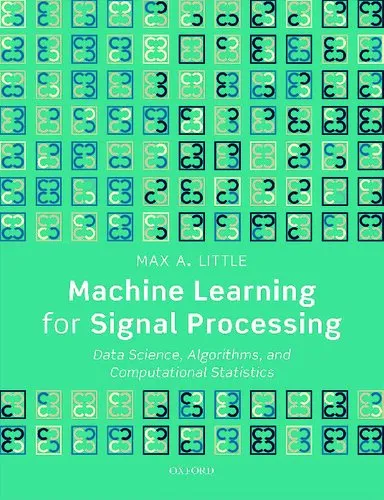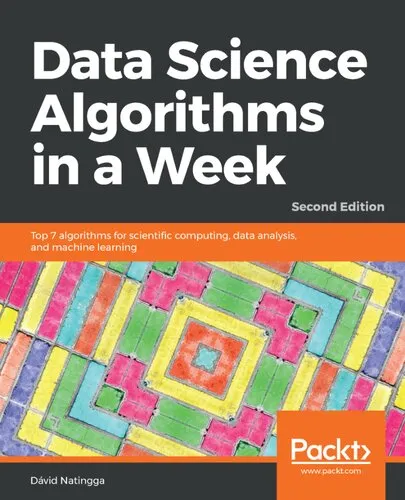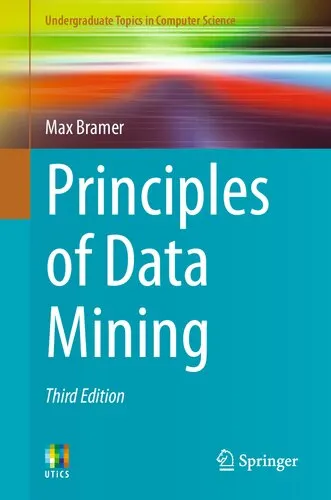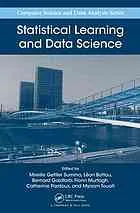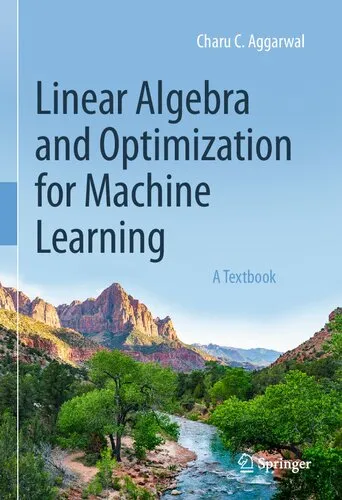Introduction to semi-supervised learning
4.5
بر اساس نظر کاربران

شما میتونید سوالاتتون در باره کتاب رو از هوش مصنوعیش بعد از ورود بپرسید
هر دانلود یا پرسش از هوش مصنوعی 2 امتیاز لازم دارد، برای بدست آوردن امتیاز رایگان، به صفحه ی راهنمای امتیازات سر بزنید و یک سری کار ارزشمند انجام بدینکتاب های مرتبط:
معرفی کتاب "Introduction to Semi-Supervised Learning"
کتاب "Introduction to Semi-Supervised Learning" نوشتهی ژو ژ. و گلدبرگ ای.ب. یکی از مراجع بنیادین در زمینهی یادگیری ماشین است که به بررسی مفاهیم و تکنیکهای یادگیری نیمهنظارتی (Semi-Supervised Learning) میپردازد. این کتاب یک راهنما جامع برای پژوهشگران، دانشجویان، و مهندسانی است که به دنبال درک عمیق از این حوزه پیچیده و جذاب یادگیری هستند.
خلاصهای جامع از محتوای کتاب
کتاب "Introduction to Semi-Supervised Learning" به طور جامع به یکی از موضوعات حیاتی در یادگیری ماشین، یعنی کاهش وابستگی به دادههای برچسبدار پرداخته است. معمولاً در یادگیری نظارتی (Supervised Learning)، مدلها نیاز به مجموعهای بزرگ از دادههای برچسبدار برای آموزش دارند. اما تهیه چنین دادههایی اغلب هزینهبر و زمانبر است. یادگیری نیمهنظارتی روشی را معرفی میکند که از ترکیب دادههای برچسبدار و بدون برچسب برای یادگیری بهتر مدلها استفاده میکند.
این کتاب ابتدا به مفاهیم اساسی قدرتمندی که زیربنای Semi-Supervised Learning است، میپردازد. نویسندگان روشهای کلاسیکی نظیر Self-training، Co-training، و Graph-based approaches را بررسی کرده و منابع نظری مورد نیاز برای درک عمیق را ارائه میکنند. همچنین مفاهیم جدیدتری مانند Entropy Minimization و Generative Models نیز به طور مفصل تحلیل شدهاند.
هر فصل از کتاب شامل مثالهای عملی، موارد استفاده، و مقایسه روشها در شرایط مختلف است. این ساختار گام به گام به خواننده کمک میکند تا از مفاهیم سادهتر به موضوعات تخصصیتر حرکت کرده و مهارتهای کاربردی خود را توسعه دهد.
نکات کلیدی و آموزنده کتاب
- درک عمیق از تفاوتها و شباهتهای یادگیری نظارتی و نیمهنظارتی
- بررسی چالشهای موجود در یادگیری از دادههای بدون برچسب
- آشنایی با الگوریتمهای کلیدی مانند Label Propagation و Graph-based techniques
- توضیح اهمیت Regularization در Semi-Supervised Learning
- نحوهی ارزیابی عملکرد مدلهایی که با دادههای ترکیبی آموزش دیدهاند
جملات معروف از کتاب
"The treasure lies in the unlabeled data - unlocking its potential can revolutionize machine learning outcomes."
"Semi-Supervised Learning bridges the gap between supervised approaches and the vast sea of unlabeled data."
"Every uncharted dataset holds a promise, and Semi-Supervised Learning is the roadmap."
چرا این کتاب اهمیت دارد؟
هوش مصنوعی و یادگیری ماشین به سرعت در حال تحولاند و توانمندی سیستمها در استفاده از دادههای بدون برچسب یکی از کلیدیترین چالشهای پیش روی این حوزه است. کتاب "Introduction to Semi-Supervised Learning" به عنوان یک منبع مرجع شناخته شده است که به خوانندگان کمک میکند مفاهیم پیچیده و عملی این حوزه را به خوبی درک کنند. اهمیت این کتاب از اینجا ناشی میشود که نشان میدهد چگونه میتوان محدودیتهای روشهای سنتی را کاهش داد و از دادهها به شکلی هوشمندانهتر بهره برد.
با رشد چشمگیر دادههای بزرگ (Big Data)، یادگیری نیمهنظارتی پایهای برای حل مسائل واقعی مانند تحلیل دادههای پزشکی، پردازش زبان طبیعی (NLP)، و بینایی ماشین فراهم میکند. اگرچه بسیاری از روشها و نظریههای ارائه شده در این کتاب به طور مستقیم در دنیای واقعی کاربرد دارند، اما ارزش اصلی این کتاب در فراهم کردن یک دیدگاه آیندهنگرانه و علمی نسبت به Semi-Supervised Learning نهفته است.
کتاب "Introduction to Semi-Supervised Learning" برای هر کسی که میخواهد در دنیای یادگیری ماشین پیشرو باشد، یک منبع ضروری و ارزشمند است. مطالعات دقیق این اثر میتواند درک شما از نقش دادههای بدون برچسب را دگرگون کند.
Introduction to Semi-Supervised Learning
Introduction to Semi-Supervised Learning by Zhu X. and Goldberg A.B. is a foundational work that addresses one of the most critical challenges in modern machine learning: how to effectively utilize vast amounts of unlabeled data alongside limited labeled data to improve model performance. This book is a pioneering exploration of semi-supervised techniques, offering readers both theoretical underpinnings and practical methodologies. The text targets researchers, data scientists, and machine learning practitioners who aim to advance their understanding of this burgeoning field.
Detailed Summary of the Book
In the realm of machine learning, labeled data is often scarce and expensive to acquire, while unlabeled data is abundantly available but underutilized. This book provides a comprehensive overview of semi-supervised learning (SSL), a paradigm that bridges this gap by making use of both labeled and unlabeled data.
The book opens by establishing the theoretical foundations of semi-supervised learning, including generative models, low-density separation, and graph-based techniques. These frameworks illustrate how unstructured, unlabeled data can be integrated into the learning process. Zhu and Goldberg delve into a variety of algorithms, covering both traditional and emerging methods, to showcase the evolution of the field.
Each topic is meticulously explained using mathematical formulations and real-world examples. The authors address challenges such as model validation, bias, and error propagation, ensuring that readers grasp the nuances of applying SSL in practice. Beyond technical insights, the book provides guidance on evaluating models, experimental design, and implementation strategies suitable for different domains, such as natural language processing, computer vision, and bioinformatics.
Key Takeaways
- Labeled data is invaluable but often limited; semi-supervised learning effectively bridges the gap by leveraging abundant unlabeled data.
- Semi-supervised learning is founded on diverse approaches, including generative models, graph-based frameworks, and low-density separation.
- SSL has practical applications across fields such as healthcare, autonomous driving, language processing, and beyond.
- The challenge of evaluating semi-supervised models and mitigating potential biases in learning warrants deeper research and innovation.
- Understanding the balance between labeled and unlabeled data is critical for optimizing SSL algorithms and achieving state-of-the-art results.
Famous Quotes from the Book
"In semi-supervised learning, the power lies not in how much labeled data you have, but in how effectively you leverage what you don’t."
"Unlabeled data is a treasure chest of information—semi-supervised learning simply provides the key."
"Semi-supervised learning challenges the traditional dichotomy of labeled versus unlabeled data, uniting them for a common goal."
Why This Book Matters
Semi-supervised learning is rapidly becoming one of the most influential topics in machine learning, as the explosive growth of data demands more efficient and scalable learning approaches. This book holds immense value for researchers and practitioners who seek to advance in a competitive and evolving landscape.
The importance of this book extends beyond its academic rigor—it equips readers with practical tools and concepts to tackle real-world problems where labeled data may be scarce. By providing both breadth and depth in its coverage, the authors ensure that novices and experienced professionals alike find value in its pages.
Furthermore, this book pushes readers to think critically about the ethical and computational challenges of working with partially labeled datasets. It lays a foundation for future advancements in the field, as well as inspires innovation in learning from incomplete or imbalanced data sources.
Ultimately, Introduction to Semi-Supervised Learning is not just a technical manual—it is a guide to rethinking how we approach data and learning in an age of information overload. Its lasting impact on both theory and practice cements its place as a cornerstone in machine learning literature.
دانلود رایگان مستقیم
شما میتونید سوالاتتون در باره کتاب رو از هوش مصنوعیش بعد از ورود بپرسید
دسترسی به کتابها از طریق پلتفرمهای قانونی و کتابخانههای عمومی نه تنها از حقوق نویسندگان و ناشران حمایت میکند، بلکه به پایداری فرهنگ کتابخوانی نیز کمک میرساند. پیش از دانلود، لحظهای به بررسی این گزینهها فکر کنید.
این کتاب رو در پلتفرم های دیگه ببینید
WorldCat به شما کمک میکنه تا کتاب ها رو در کتابخانه های سراسر دنیا پیدا کنید
امتیازها، نظرات تخصصی و صحبت ها درباره کتاب را در Goodreads ببینید
کتابهای کمیاب یا دست دوم را در AbeBooks پیدا کنید و بخرید
سوالات پرسیده شده از این کتاب
1259
بازدید4.5
امتیاز0
نظر98%
رضایتنظرات:
4.5
بر اساس 0 نظر کاربران
Questions & Answers
Ask questions about this book or help others by answering
No questions yet. Be the first to ask!
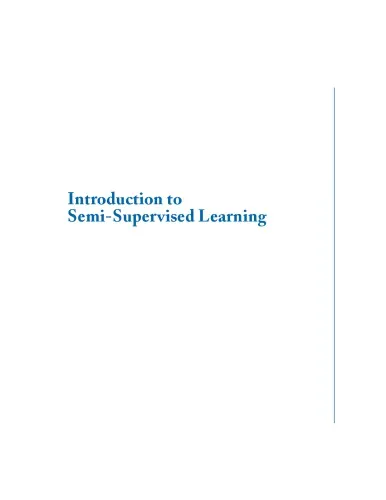

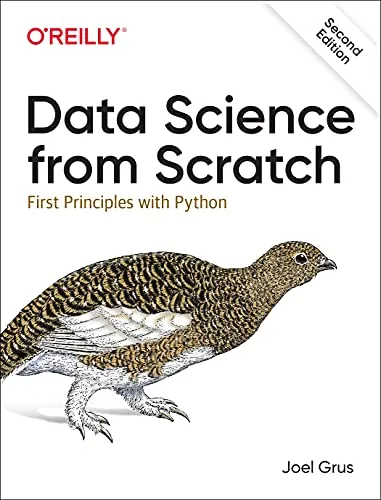


![Mining of Massive Datasets [Team-IRA]](https://s3.refhub.ir/images/thumb/Mining_of_Massive_Datasets__Team-IRA_19920.webp)
